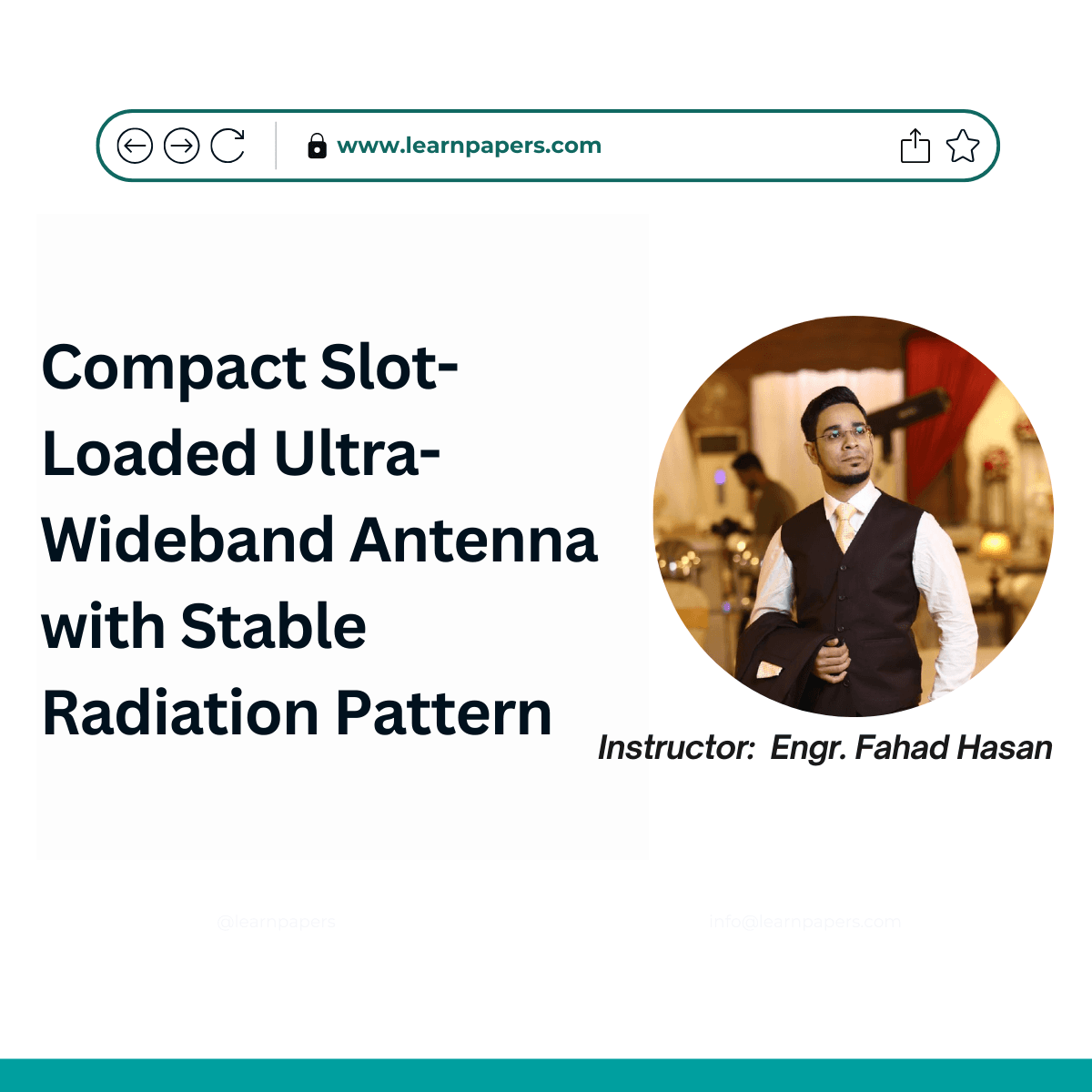Compact Slot-Loaded Ultra-Wideband Antenna with Stable Radiation Pattern

About Course
This course provides an in-depth exploration of ultra-wideband (UWB) antenna design, focusing on the slot-loaded compact antenna proposed in this research. Learners will understand antenna engineering fundamentals, fabrication techniques, simulation processes, and performance evaluation, making them capable of designing and optimizing UWB antennas for wireless communication applications.
Ultra-wideband (UWB) antennas are revolutionizing modern wireless communication, offering high bandwidth, stable radiation patterns, and efficient signal transmission. This course explores the design, simulation, and optimization of a compact slot-loaded UWB antenna, a cutting-edge technology essential for 5G networks, IoT applications, radar systems, and biomedical devices. Learners will gain hands-on experience with HFSS and CST Studio Suite, mastering techniques to enhance antenna performance, improve impedance matching, and achieve optimal radiation characteristics. Whether you are an RF engineer, researcher, or a student, this course provides step-by-step guidance to help you develop a high-performance UWB antenna from scratch.
Through real-world case studies and research-backed methodologies, this course ensures practical, application-driven learning. Participants will explore slot-loading techniques, T-shaped ground modifications, and fabrication guidelines to create an efficient, miniaturized UWB antenna suitable for next-generation wireless technologies. By the end of this course, learners will not only understand antenna theory and design principles but also be able to simulate, test, and optimize antennas for industry-level applications. Join us and advance your expertise in RF and microwave engineering while leveraging the latest advancements in UWB antenna technology.
Abstract:
DOI
Course Content
Module 1: Introduction to Ultra-Wideband (UWB) Antennas
Module 2: Fundamentals of Antenna Design
Module 3: Design and Fabrication of the Proposed UWB Antenna
Module 4: Optimization Techniques for UWB Antennas
Module 5: Simulation and Performance Analysis
Module 6: Experimental Validation and Testing
Module 7: Applications of UWB Antennas in Wireless Communication
Module 8: Hands-On Project – Designing and Optimizing Your Own UWB Antenna
Student Ratings & Reviews
